Since 2002, when the first emerald ash borers (EAB) were identified in Michigan and Ontario, the glistening green beetles have spread rapidly, enjoying a mostly uncontested feast. The numbers are familiar by now, and grim: 35 states and 5 provinces have known infestations. All 16 North American ash species are vulnerable. Death comes quickly to infested trees, typically within 2 to 5 years. In “aftermath sites,” ash mortality is more than 99 percent. Unlike many would-be invaders, EAB is well adapted to northern winters. For example, a 2014 U.S. Forest Service study in Minnesota found that EAB larvae only began to experience significant winter mortality when in-tree temperatures dropped to negative 20 degrees.
Although the Northeast still has many unaffected areas, there’s little hope that in the short-term, mature ash will remain a common member of the forest mix. “Ash are done,” said Jeff Main, an ecologist working for southern New York’s Westchester County, where EAB is firmly established. “This summer I met a tree surgeon camping in our Pound Ridge Reservation, so I asked about ash. ‘We cut them,’ he said. ‘Dead or barely alive. That’s all we do now.’”
In the long-term, however, the prognosis for ash is less certain, and more hopeful. As researchers study the insect and tree responses to infestation, they’re making progress on strategies to control – albeit not eradicate – EAB. Targeted application of insecticides, releases of parasitoid wasps, and efforts to develop genetically resistant trees all show promise, especially in combination.
The Perfect Hosts
As with any infestation, treatment requires understanding how EAB spreads, and why it is so damaging. The addition of one more wood-boring beetle (probably by circulation of wooden pallets from Asia) wouldn’t seem to be such a disruptive event in a forest. After all, North American trees are riddled with many native pests. A near-EAB twin, for example, often infests birch trees.
“Bronze birch borer is EAB dressed in brown,” said Claire Rutledge, an entomologist with the Connecticut Agricultural Experimental Station. “Native birch co-evolved with them, though, matching them in an arms race, and bronze birch borers mostly attack trees in perimortem, or near death. That’s what EAB does in Asia.”
North American ash have a similar co-evolved relationship with the clear-winged ash borer. Trees in their prime have the chemical weaponry to kill larvae. In the context of EAB, however, the trees are a naïve population, meaning they haven’t had generations to adapt.
“Our ash are the perfect hosts,” said Tamara Van Ryn, manager of the Adirondack Park Invasive Plant Program (APIPP). EAB was first found in the park in 2020 at a Schroon River boat launch. “The trees here don’t really have defenses, the same as with [wooly] adelgids on hemlocks.”
Like most wood borers, EAB are host-specific, only laying eggs on ash trees. Larvae can feed on trees as small as 1 inch in diameter, and they disrupt nutrient flows in the phloem, creating sloppy tracks called galleries. Depending somewhat on growing degree days (as it relates to EAB, these are the number of days with ideal temperatures for larval growth) but mostly on infestation density, they take one to two years to pupate. Adults fly well (exact distance is uncertain, but individuals can fly up to 6 miles) but how they’ve spread so far so quickly is attributable to another skill.
“They’re fantastic hitchhikers,” said Rebecca Bernacki, an APIPP biologist. “The larvae currently move through firewood shipments, and, in the early years before tight regulations, moved through nursery deliveries.”
It’s this ability to move tens to hundreds of miles at a time, coupled with their habit of attacking upper branches and at low density first, which allows them to firmly establish for two years before trees show signs of infestation, that has frustrated attempts to contain EAB. On the detection side, however, things are changing.
Advances in Early Detection
Early detection is vital to slowing the spread of EAB. Box traps catch EAB, but not reliably, and in many infested areas the signature D-shape exit holes and bark blonding – patches of missing bark where woodpeckers have fed on the larvae – have been the first indicators of already entrenched EAB populations. However, the use of trap trees allows earlier detection. Forest monitors girdle healthy ash, causing the release of chemicals attractive to dispersing EAB adults. The next year, the monitors fell the trees and search for larvae.
Another detection strategy involves a native parasitoid wasp. Claire Rutledge runs a citizen-scientist program in Connecticut involving a wasp delightfully named the smokey winged beetle bandit, sand-loving diggers that frequent playgrounds.
“Diggers put 30 to 40 ground nests near each other,” Rutledge said. “They stuff prey in brood cells. We train people to observe for EAB then chase the wasps off [the playground]. Smokey winged beetle bandits are generalists, so they grab anything from bronze birch borers to tiger beetles to many others – so the lab determines if a suspicious-looking prey is EAB, which helps with early detection.”
Impacts on Biodiversity
According to the USFS, approximately 2 percent of North America’s tree cover is made up of ash, roughly 8 billion trees. In New York, they comprise 8 percent of tree cover, Vermont and New Hampshire 5 percent, and in southern New England 2 percent. Maine is at 2 percent as well.
Ash aren’t evenly distributed; in places such as north-central Vermont, ash species can make up 30 percent of the canopy. At the Hubbard Brook Experimental Forest in the White Mountains of New Hampshire, where EAB was detected in 2020, ash comprise only about 1 percent of the tree population. “Not a lot of trees,” said Matt Ayres, a Dartmouth College ecologist who conducts research at Hubbard Brook. “But the forest – and my life – will be diminished when they’re gone.”
Ayres and his colleagues are protecting selected ash with insecticide as EAB establishes and eventually kills most of the others. Much is known of ash, but much is not, and Ayres and others need these protected trees to further learn what’s at stake if ash are indeed lost. “We mostly have white ash,” Ayres explained. “They’re a disturbance tree, so we’ll have groves of 4 and 5, maybe 12, usually a hurricane marker.” These groves, while uncommon at Hubbard Brook, provide important big-picture benefits. Ash leaf out days later than other hardwoods, making them havens for spring ephemerals such as trilliums, bloodroot, and trout lilies. Ash leaves also have less lignin than other leaves, particularly oak, so they decay right away and cycle nutrients quickly. As with all trees, ash additionally have their own fungal associations. “Ash associate with ectomycorrhizal fungi, which are fundamentally different than the arbuscular associations of most other trees,” Ayres said. “That might affect the brown food web, or the soil microfauna so important to carbon storage and nutrient transfer. It’s a jungle down there, and we don’t know what will happen without ash, but we’re going to study it.”
Research in Minnesota indicates that amphibians, particularly wood frogs, will suffer from the loss of decomposing ash leaves, an important diet component for tadpoles. Red maples, swamp white oaks, and other replacements have woodier, slower-to-rot foliage. Insects are another worrisome suite, with ash having a hundred obligate arthropods (insects dependent on ash) continent-wide.
“There’s no rescue island,” said David Wagner, an authority on North American caterpillars and associate professor of ecology and evolutionary biology at the University of Connecticut. “Chestnuts are closely related to red oaks, so when they went down most obligate [insects] made that jump.” The closest tree relations to ash are olive trees, Wagner explained. Olives are absent from the forests of North America, and obligate insects won’t have an escape.
The full cost to biodiversity will be hard to tally. “Canadian sphinx moths are one people might know, but there will be dozens of lesser-known insects just gone that we never got to study,” Wagner said.
Biocontrols
Early detection has helped researchers hone timing of biocontrol wasp releases to reduce EAB populations, in this case, wasps from EAB’s native Eurasian range. Biocontrol comes with risks (for example, tachinid flies, released to control spongy moths, Lymantria dispar, previously known as gypsy moths, often prey on native silk moth species), but it has been successfully implemented before, such as with Galerucella (leaf) beetles for purple loosestrife. Where EAB was discovered, the U.S. Department of Agriculture’s Animal and Plant Health Inspection Service (APHIS) moved quickly to research this approach, investing in work in Russia and China to find and capture wasps host-specific to EAB.
Identifying a likely parasitoid is time-consuming. A selected species shouldn’t sting people or target other native species, and study of their behavior takes time. To date, four species across EAB’s new North American range have been released. The USDA approves the site, and local officials do the releases and follow-up work. The APHIS center in Brighton, Michigan, breeds the wasps and ships them for release.
“We have a range of parasitoids now,” said Juli Gould, a lead APHIS biologist. “Oobius agrili attack EAB eggs. Three others target larvae but prefer different instars. Two of these are released up north. Tetrastichus planipennisi, or Tets, get at shallower, earlier instars, whereas Spathius galinae have a longer ovipositor, getting deeper in the cambium. Galinae prefer the fourth instar and attack larvae in 95 percent of ash, all but the thickest-barked trees. We’re seeing wasps establish and spreading out. We released on the Hudson’s east bank and found them on the west side a couple of years later.”
Jian Duan, a biologist with the USDA’s Agricultural Research Service, closely monitors Michigan’s ash in areas where biocontrol was first deployed. “It’s promising,” he said. “It’s been a learning curve, but although we still struggle with timing – trying to figure the optimum infestation stage to release – we’re seeing good effects.”
In some Michigan plots, Duan reports 60 to 70 percent EAB mortality, and said that woodpeckers are effective in conjunction, killing up to 40 percent of larvae. One criterion for choosing an area for wasp release is an abundance of seedling ash. Ash can germinate in shade, but stall without sufficient sun. They can, though, exist as seedlings for years, waiting for a canopy opening. In areas where larger trees have succumbed to EAB, this remnant generation is called the “orphan cohort,” a population too small for EAB to attack. As they grow while their parents die, however, they’re vulnerable. Protecting them is vital, something Duan has seen as wasps establish. “In 12 plots where we’ve had wasp releases across 10 years, 11 have recovered beautifully,” he said.
The Human Cost of EAB
According to American Forests, the value of standing ash in North America is approximately $280 billion. And although substitutes exist for many uses of ash wood (see for example, “Shadows on Craft and Culture: The Loss of Ash,” Northern Woodlands Winter 2018 issue), the tree’s cultural value is incalculable, and irreplaceable.
Kerry Wood, a member of the Nulhegan Band of the Coosuk Abenaki in Vermont (shown above processing black ash splints), creates black ash and sweetgrass baskets, an art form that has experienced a renaissance after a period of state suppression of indigenous cultural practices. “My great-grandmother made and sold these baskets to survive,” she said, adding that in reviving the practice, she’s reconnected to her culture. “I’m devastated about EAB. Our creation story is directly linked with the ash tree.”
Wood and others across the northern hardwood tier are working with everyone they can to preserve black ash. But, anticipating generations without them, they’re engineering ways to cure raw splints from existing trees to save basketry for future generations.
Insecticides and Genetic Breeding
Insecticide treatments are primarily used by homeowners and city planners to protect cherished shade and sidewalk trees. Economically, treating entire forest stands isn’t feasible, and administering insecticides across multiple hectares raises concerns about secondary impacts.
However, targeting trees that produce abundant seed, and are EAB-free, can preserve genetic variation through the worst infestations. Gould said urban areas in Colorado, Illinois, and New York have seen insecticide-treated heritage trees survive while wasp populations build, something currently underway in forested settings.
Bill Davidson, a forest health specialist for New Hampshire Division of Forests and Lands, has been implementing this combination. “Throughout the state we have sites doing both. We treat 12 to 15 mature trees to preserve genetic diversity alongside wasp releases. We’re getting wasp retention, but it’s early to draw conclusions.” This early phase has been implemented in select spots across New England.
Breeding for genetic resistance has been hardest to sell, a mystery to Jennifer Koch, a biologist at the Ohio Northern Research Center. “It’s been hard to convince people that ash do have resistance that can be strengthened through breeding,” she said. “We’ve done it so many times – southern pines for fusiform rust, western pines for blister rust, Dutch elm disease-resistant elms, and breeding American chestnuts with Chinese ones against blight. We had great success breeding beech against scale in just 10 years, too, before beech leaf disease hit.”
Although Eurasian ash readily kills EAB, prospects for crossbreeding North American and Eurasian species aren’t promising. Fortunately, the approximate 1 percent North American survival rate makes such hybridizing moot. Koch, Duan, and Koch’s colleague Kathleen Knight noticed that even in the worst Midwest devastation some trees lived. Some also took longer to die, meaning they had at least some ability to fend off EAB. Dubbing both the survivors and slower-to-succumb groups “lingering ash,” Koch and Knight took scions, mostly from green ash, and Koch grafted them with other ash, and then infested them with EAB.
“The second generation is the most important,” she said. “Resistance is a quantitative trait, so by breeding successive generations we increase it. If a tree can live 25 percent longer in the woods, it can reproduce, passing that trait along. The idea is to plant resistant strains where wasps are established and protected heritage trees are seeding. EAB eradication is highly unlikely, but it could become just another wood borer if all goes well.”
While Koch’s team is focused on green ash in Ohio and Michigan, they’re partnering with organizations around the country to identify specimens of lingering ash. The Ecological Research Institute in New York works with them, and through that organization’s Monitoring and Managing Ash (MaMA) program, New Englanders and New Yorkers are laying groundwork to look for survivors. Once found, the breeding process with genetic variants will begin. APIPP is already on board.
“It’s early to declare anything a lingering ash,” Tamara Van Ryn said, referring to the Adirondack region. “But we have people marking 40 healthy trees in a stand. When those hit 50 percent mortality, we’ll assess if any in the area are potentially lingering and report those to the genetic-breeding program.”
Openings for Invasive Plants
Loss of ash also creates opportunities for invasive plants to proliferate, resulting in further disruption of forest systems. For example, where black and green ash dominate, they regulate swamp hydrology, in part by sucking up more water and casting more shade. Without that steady aspiration and cover, invasives such as buckthorn, honeysuckle, and barberry take over.
“It’s an invasive meltdown,” explained APIPP biologist Rebecca Bernacki. “Water levels go up and even nitrogen levels change. Carbon storage is less, too, because shrubs choke out tree regeneration.”
In the Midwest, Kathleen Knight is planting trees to make up for that hydrological function. “In areas where ash aren’t dominant, it’s not necessary,” she said. “EAB kill ash slow enough that silver and red maples grow into those canopy spaces. Where we’ve lost so much green ash, we plant floodplain trees to maintain forest cover.”
These include pin oak and sycamore, and – in an Anthropocenic burlesque – elm bred for Dutch elm disease resistance. When 20th-century elms died en masse, ash frequently filled in. Now that ash are vanishing, genetically improved elm are resurging.
Hope for the Future?
It’s too soon to tell if these combined strategies will work, and what that will mean if they do. Will ash go extinct? Will they survive as a small, remnant population? Or will they reclaim their former status?
Although the future of ash is uncertain, learning from the experiences of previous tree infestations – from elms to chestnuts to beech and others – has helped people move quickly to assess and implement the best strategies against EAB. The causes of individual tree resistance to EAB are still poorly understood genetically and chemically, but ash of all species are surviving (with the likely exception of black ash) and at least have the potential of being bred for resistance, as Koch’s success with upper Midwest green ash has proved. Wasps are establishing and inflicting heavy damage and – if things progress – will surpass woodpeckers as the lead biocontrol agent, with the two ideally keeping EAB at manageable levels. Genetic stock is being protected with insecticide.
Perhaps this progress is some consolation to forest stewards and woods lovers, even as we witness EAB spread, and ash die apace.
“It’s hard to explain the success we’re seeing to people watching beloved trees die,” Jian Duan said. “Patience is key, but we’re seeing great promise in as short as 10 years, so there’s hope.”


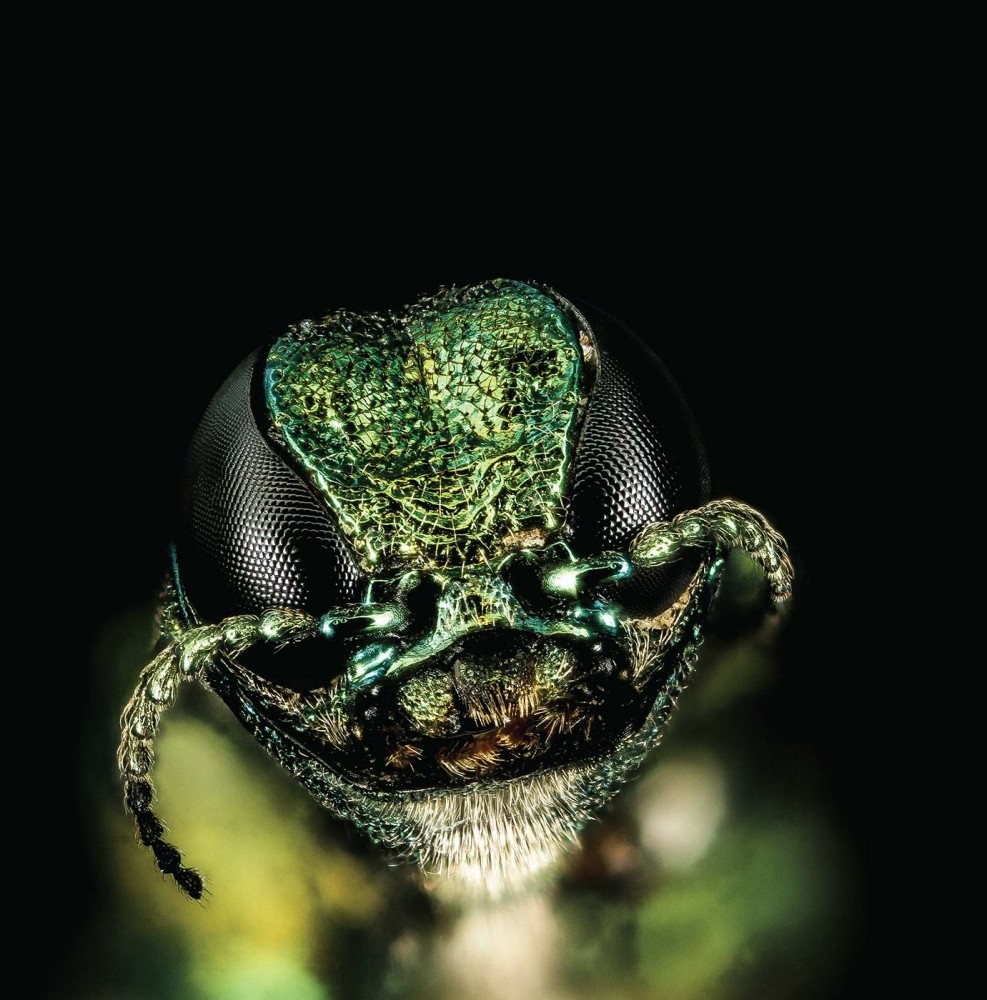
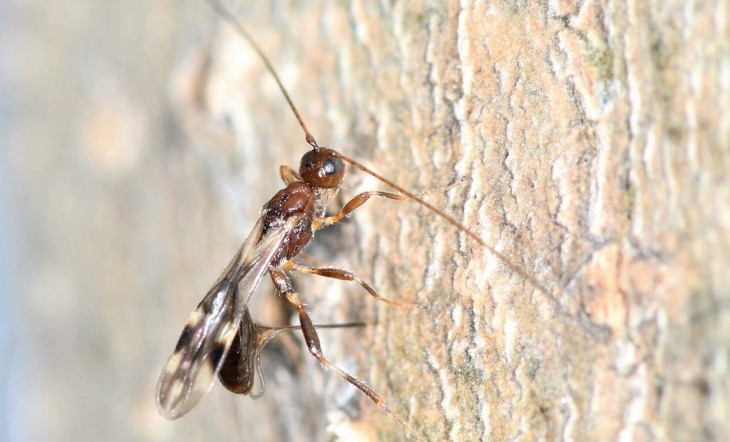
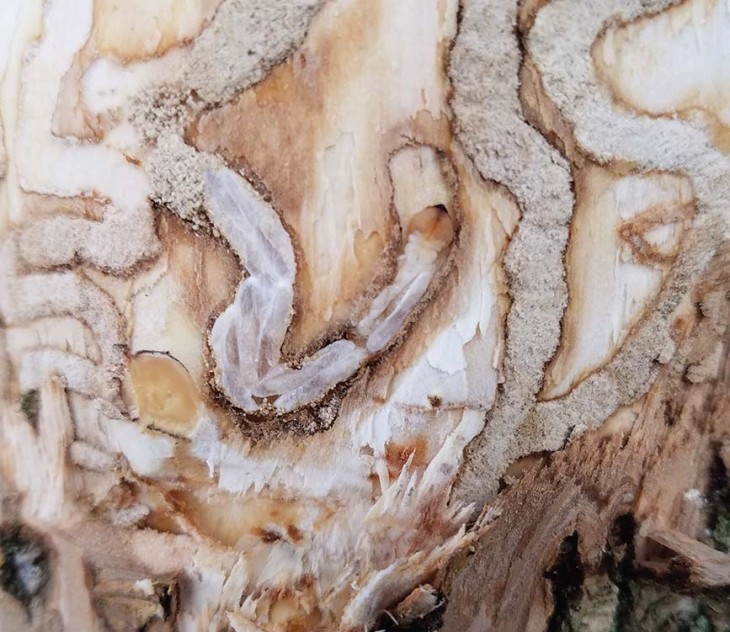
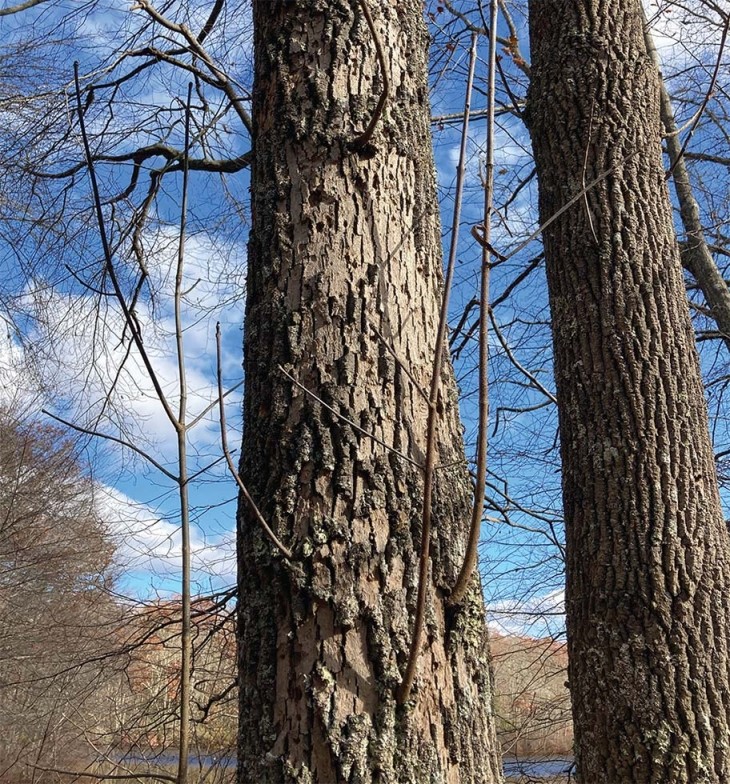

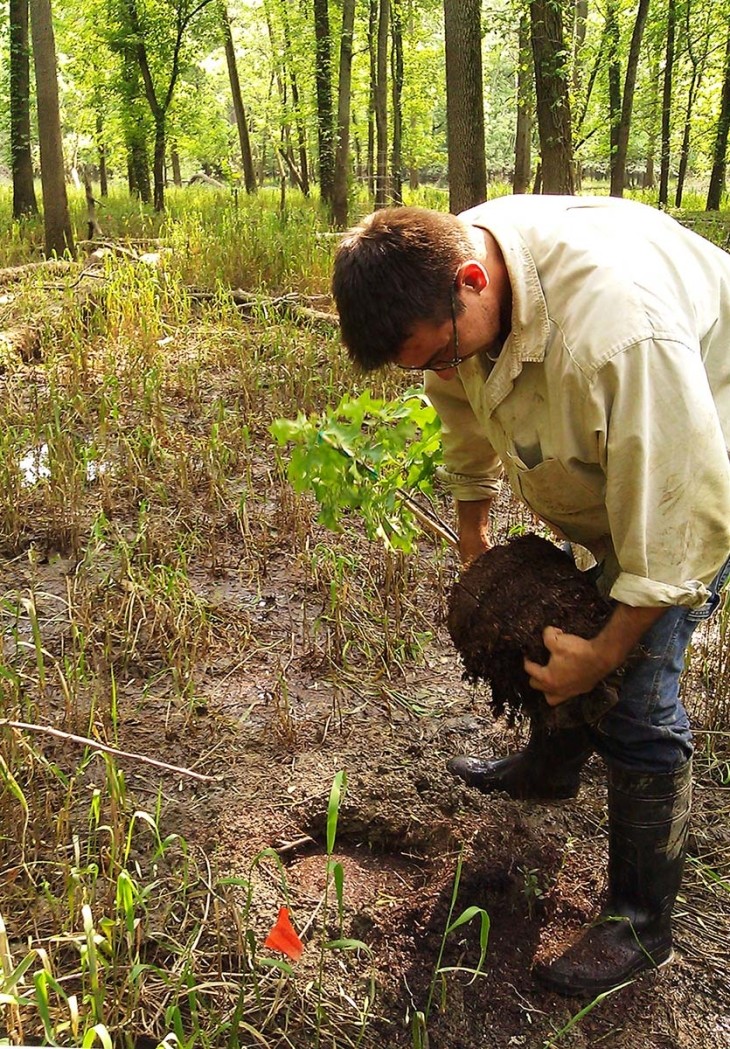
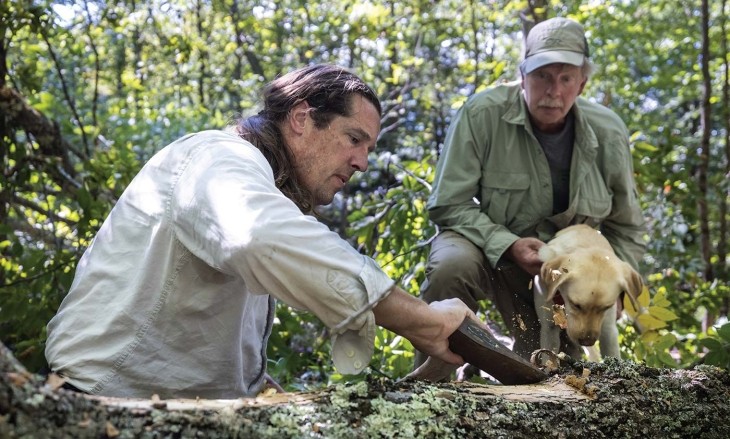
Discussion *